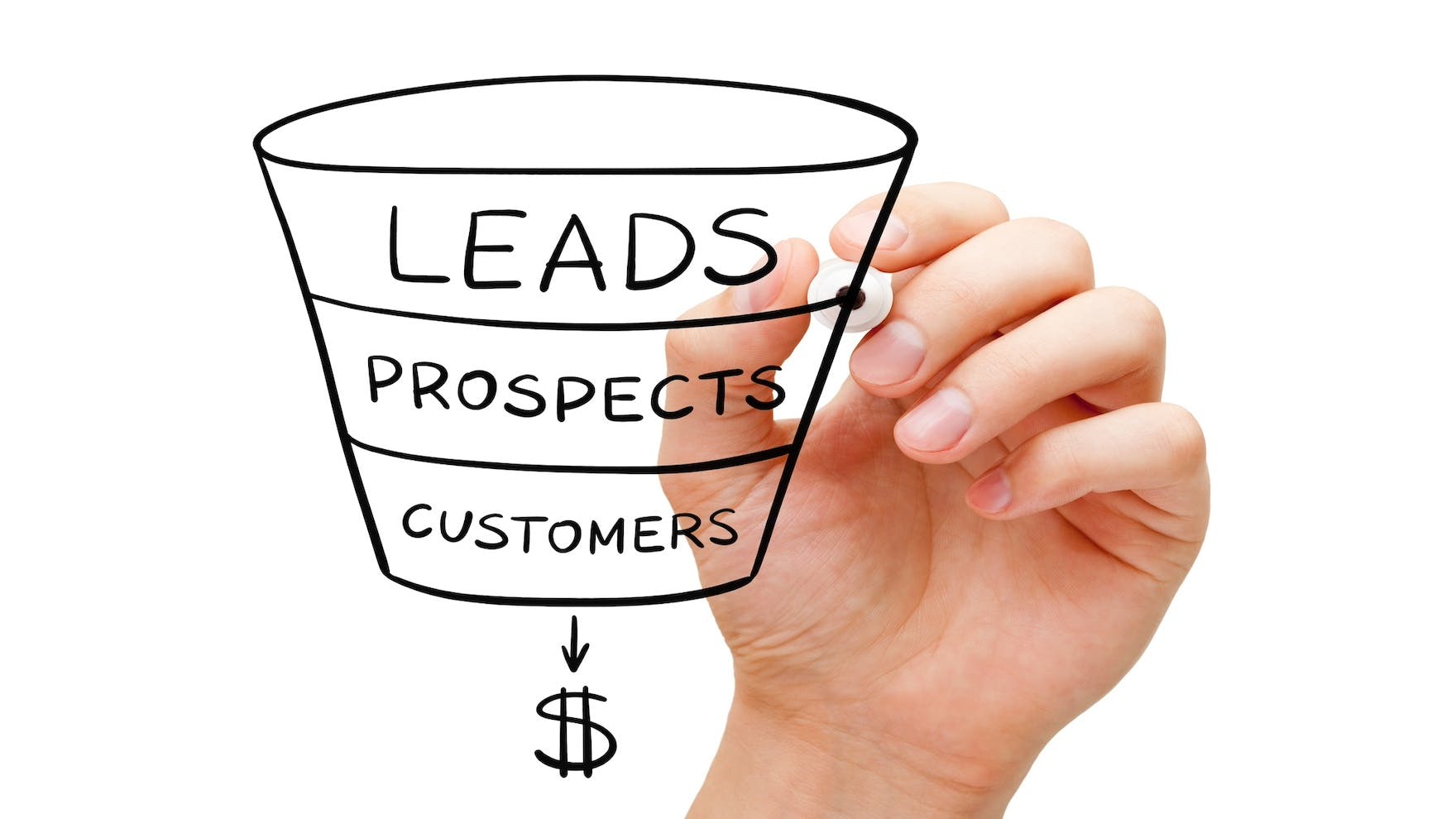Lead vs. Prospect vs. Opportunity: Everything You Need to Know
Many sales reps don’t understand the nuances and differences between the terms lead vs. prospect vs. opportunity, and may even sometimes use them interchangeably.
In reality, though, these terms all represent distinct stages in the sales funnel, and salespeople need to understand how they compare to one another so that they can approach and nurture each of them with the appropriate strategy.
When sales reps understand and use these words/concepts appropriately, they can better address the needs of each individual in the pipeline.
In this article, we’ll go over everything you need to know about lead vs. prospect vs. opportunity, including clear definitions of each term, how they relate to one another, and how to move buyers in each category to the next stage. We’ll also talk about why it’s important to be nitpicky about using the terms properly.
Here’s what we’ll cover:
- What Is a Lead?
- What Is a Prospect?
- What Is a Sales Opportunity?
- Lead vs. Prospect
- Prospect vs. Opportunity
- Lead vs. Opportunity
- How to Turn a Lead into a Prospect
- How to Turn a Prospect into an Opportunity
- Why It All Matters
What Is a Lead?
A lead is someone who has indicated an interest in your product or brand and could potentially become a customer but is not yet qualified.
Leads live at the very top of the sales funnel (where prospects are in the middle and opportunities at the bottom). 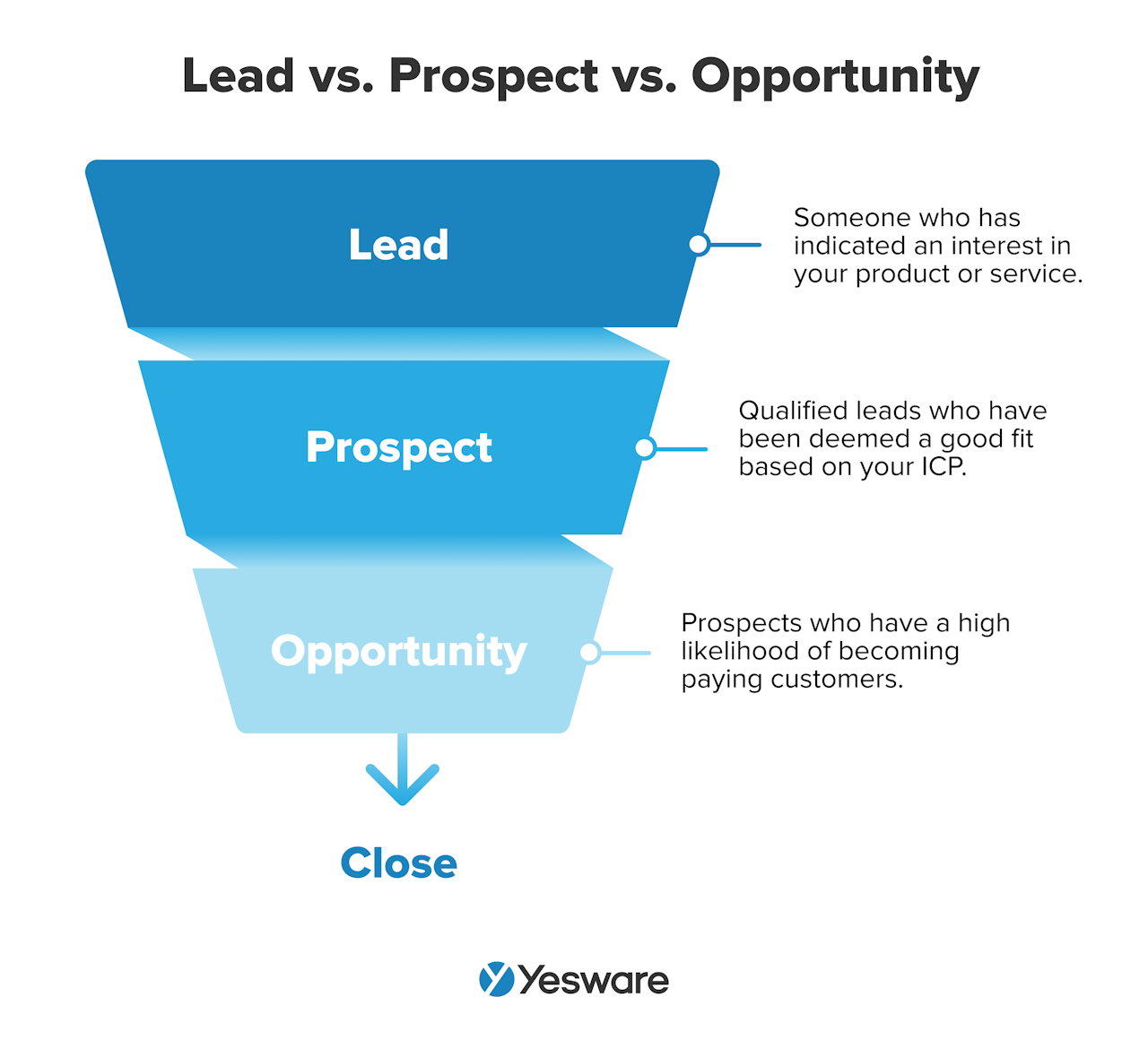 Leads are sometimes further defined in two categories: marketing qualified leads (MQLs) and sales qualified leads (SQLs).
Leads are sometimes further defined in two categories: marketing qualified leads (MQLs) and sales qualified leads (SQLs).
When considering it in terms of lead vs. prospect vs. opportunity, the term “lead” has the broadest criteria of the three. Many more buyers fit into the “lead” category than “prospect” or “opportunity.”
Still, leads represent a pivotal stage of the sales process. Sales teams need a steady, sustainable stream of leads in order to meet their overall sales goals.
Leads can show interest by making contact with the sales or marketing team. They may also submit a form, sign up for a newsletter, or download a lead magnet.
In other words, leads are buyers who show interest in your company in some way — but it’s up to sales teams to figure out from there just how viable, interested, and well-suited they really are for your solution before calling them a prospect.
What Is a Prospect?
A prospect lives further down the sales funnel than a lead.
Prospects have been qualified by the sales team and have been deemed a good fit based on the criteria described in your company’s ideal customer profile (sales ICP). 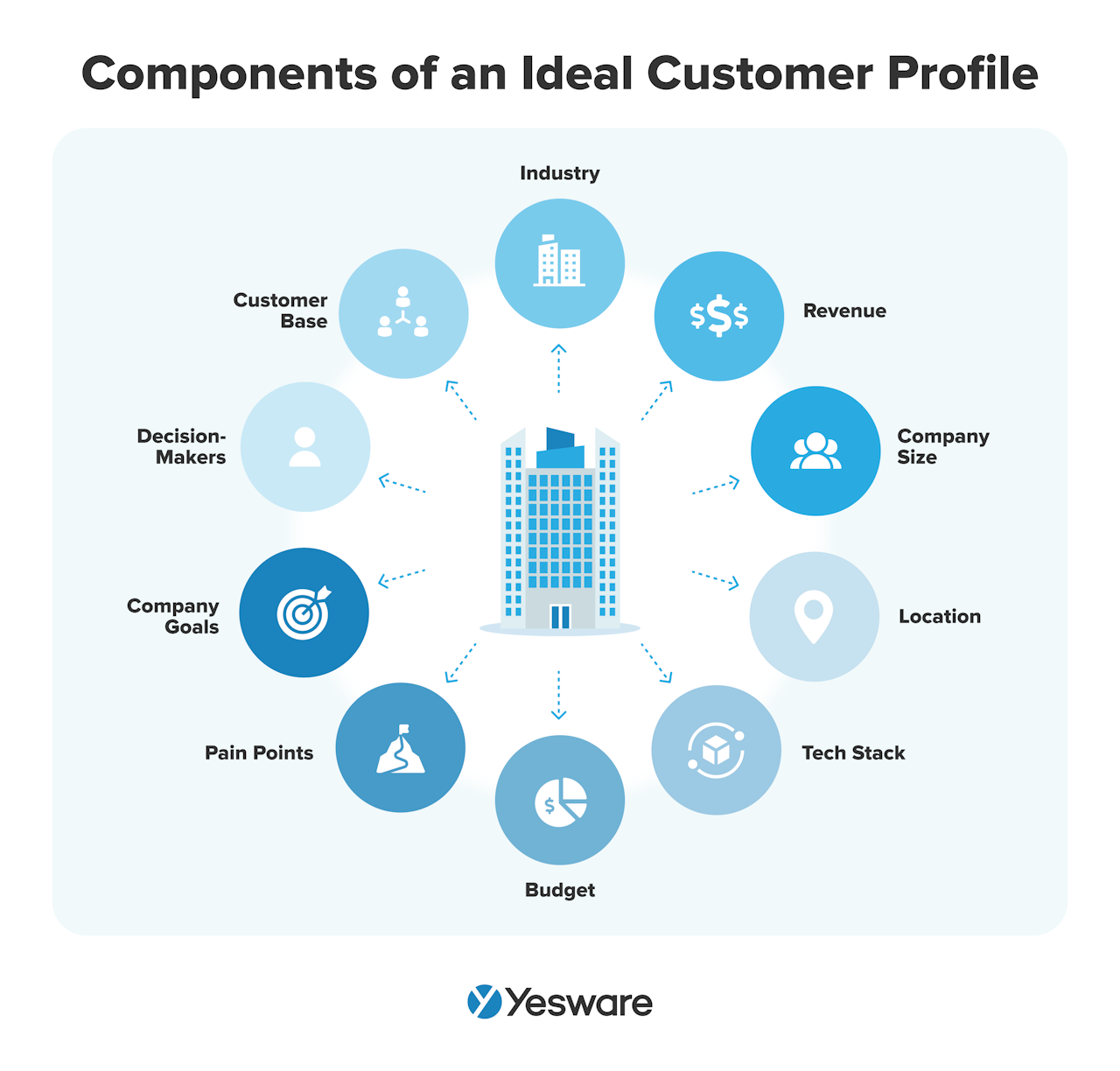 Sales reps can also use open-ended questions to better understand the wants, needs, pain points, and challenges that define each prospect.
Sales reps can also use open-ended questions to better understand the wants, needs, pain points, and challenges that define each prospect.
In addition to the likelihood that they would benefit from your solution, prospects have also demonstrated a clear interest in exploring your solution and/or have responded well to lead nurturing efforts.
Prospects are a smaller and better-defined group of potential buyers. Sales teams can use a lead scoring process to help them prioritize prospects in the pipeline. 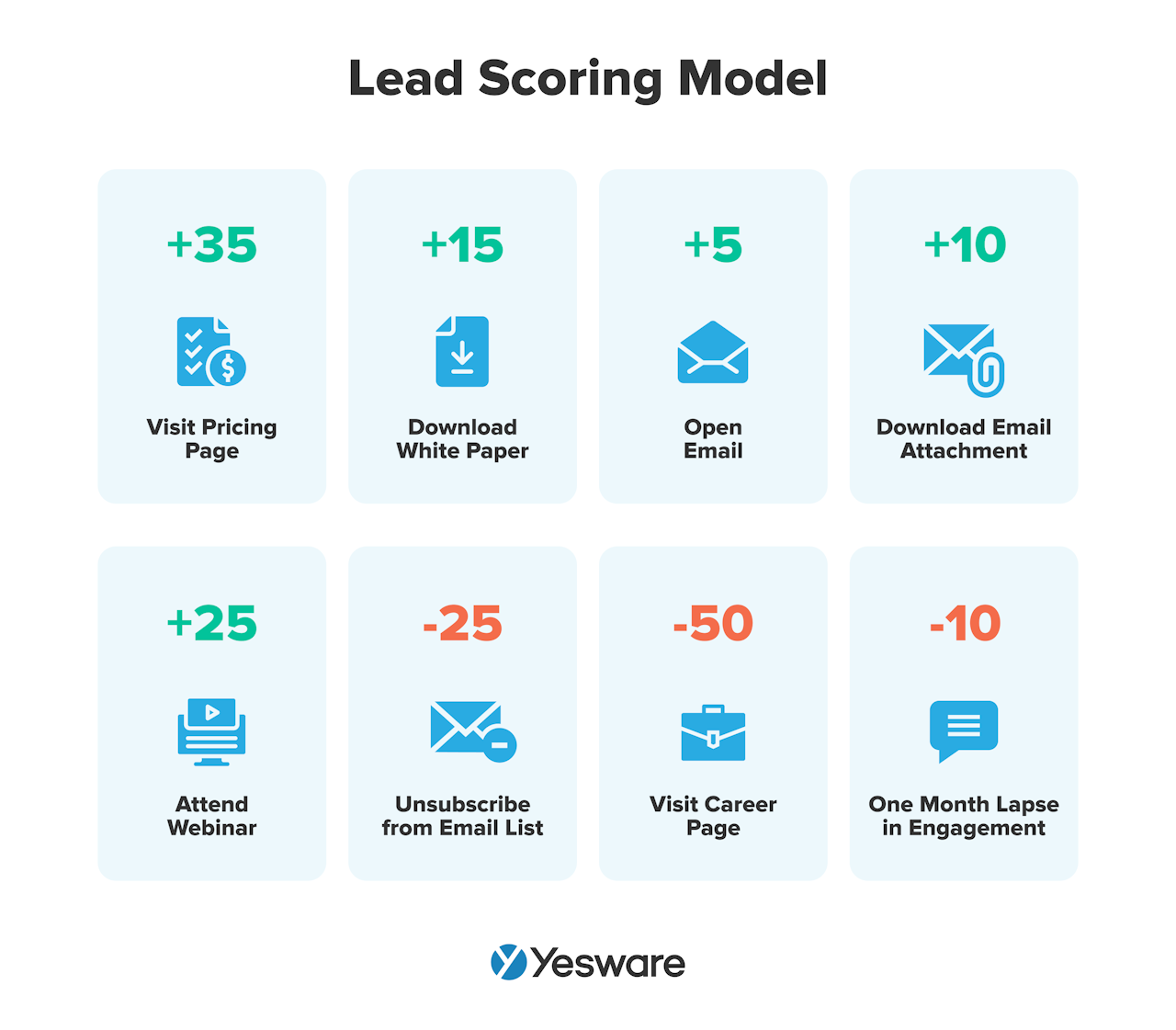 It’s worth noting here that sales prospecting, as an activity, sometimes earns a bad reputation among experienced sales reps.
It’s worth noting here that sales prospecting, as an activity, sometimes earns a bad reputation among experienced sales reps.
While finding prospects may be one of the more challenging parts of the sales process, a pipeline full of well-vetted prospects is a huge advantage for sales organizations.
Teams that can systemize the prospecting process can work to track, measure, and optimize their prospecting performance over time.
What Is a Sales Opportunity?
A sales opportunity can be found furthest down the sales funnel; these are the prospects who are closest to becoming a closed-won deal. They have a high likelihood of becoming paying customers.
Sales opportunities have been thoroughly qualified, with a distinct and pressing pain point that both parties are confident can be solved by your product or service.
They should also have demonstrated clear and enthusiastic interest, as well as an increasing readiness to buy throughout the sales process.
Sales opportunities are valuable and should be prioritized. The figure varies by industry, but on average the lead-to-opportunity conversion rate is less than 20% — they are very worthy of your attention and resources.
Lead vs. Prospect
Leads and prospects both exist in the top half of the funnel. They also both have an awareness of your brand and/or product.
Prospects differ from leads in that they have been qualified by the sales team. They sit one step below leads in the sales funnel.
They’re also considered more likely to buy than leads, too, based on characteristics in the ICP and other qualifying information.
Lead scoring can help sales reps distinguish between leads and actual prospects. 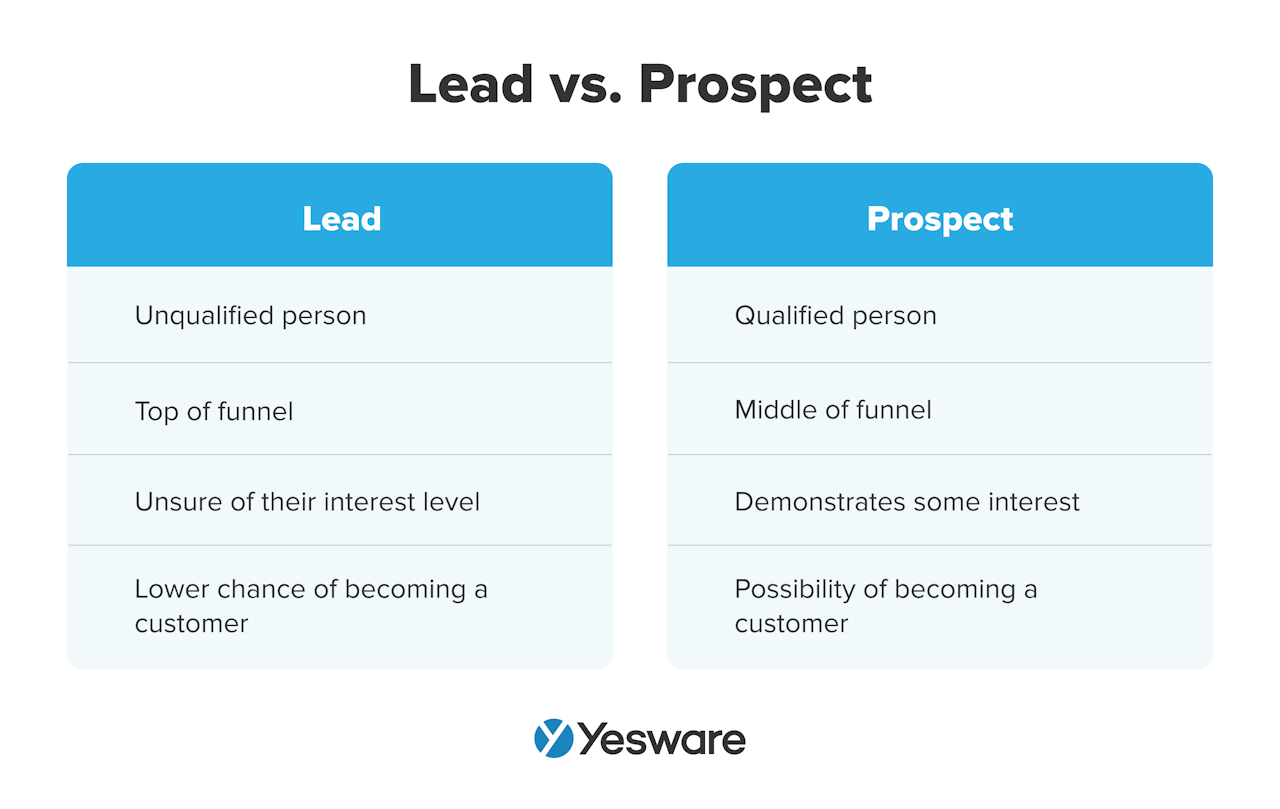
Prospect vs. Opportunity
The difference between prospect and opportunity is probably the most nuanced in the comparison of lead vs. prospect vs. opportunity.
A prospect becomes an opportunity when they express clear interest and tangible steps forward in making a purchase.
This may look like requesting a quote or proposal, or signing up for a free trial.
These buyers have demonstrated clear buying signals that indicate relative urgency and willingness to commit. 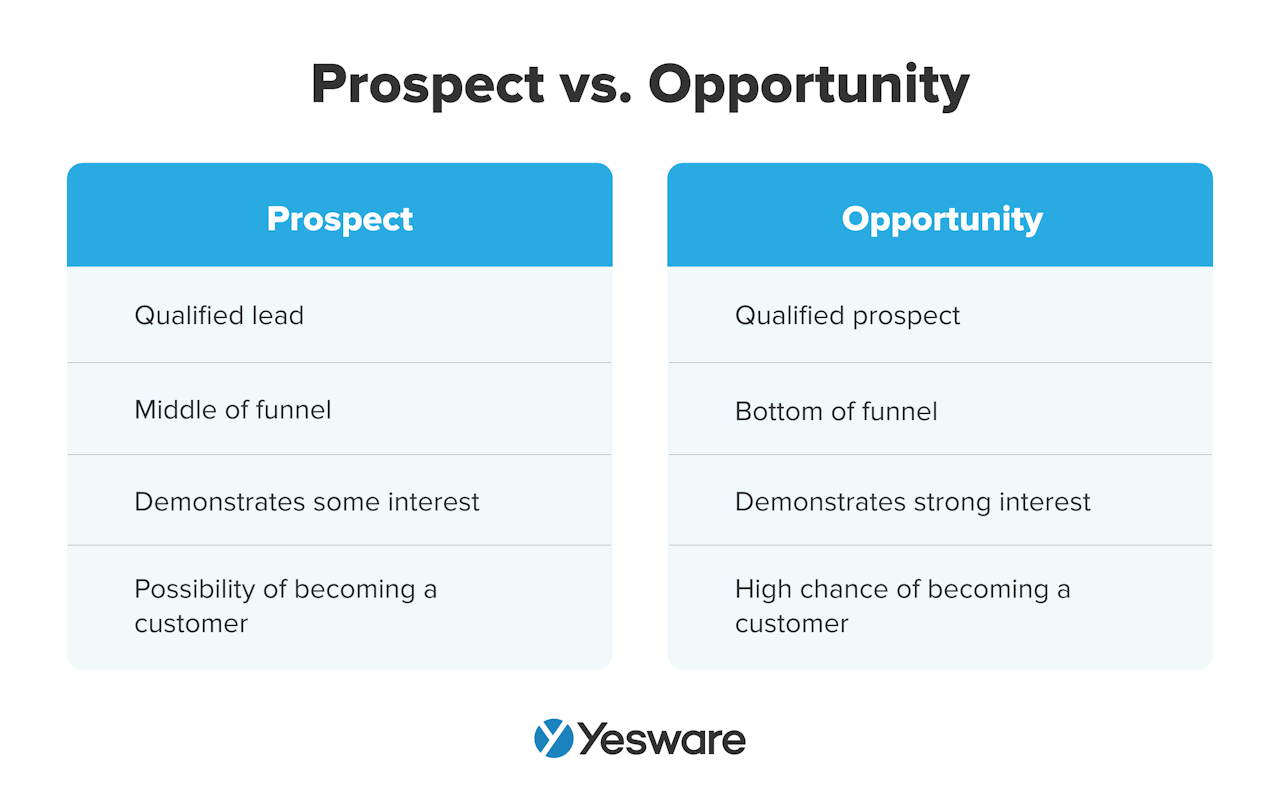
Lead vs. Opportunity
Leads and opportunities are at virtually opposite ends of the sales funnel.
While leads are defined by broad criteria and general characteristics, sales opportunities are clearly defined and much more timeline-oriented.
The gap between a lead and an opportunity is about as wide as it can be, with only paying customers sitting lower in the funnel. 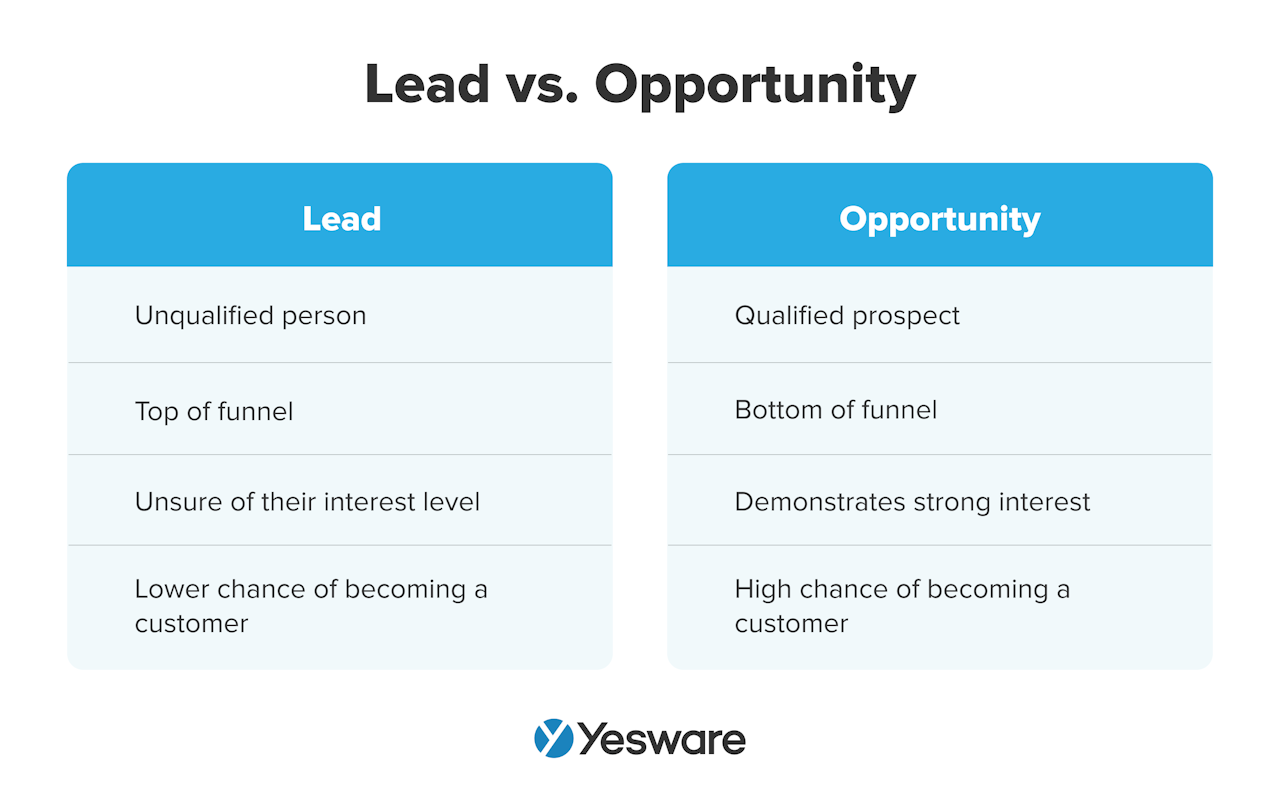
How to Turn a Lead into a Prospect
It’s great to have a lot of leads, but they need to become prospects for your team to see any success.
Here are some strategies for turning leads into prospects.
1. Qualify Your Leads
The first step in turning a lead into a prospect is to qualify them.
Many marketing and sales teams successfully streamline a lot of the lead qualification process by creating detailed ICPs and buyer personas. 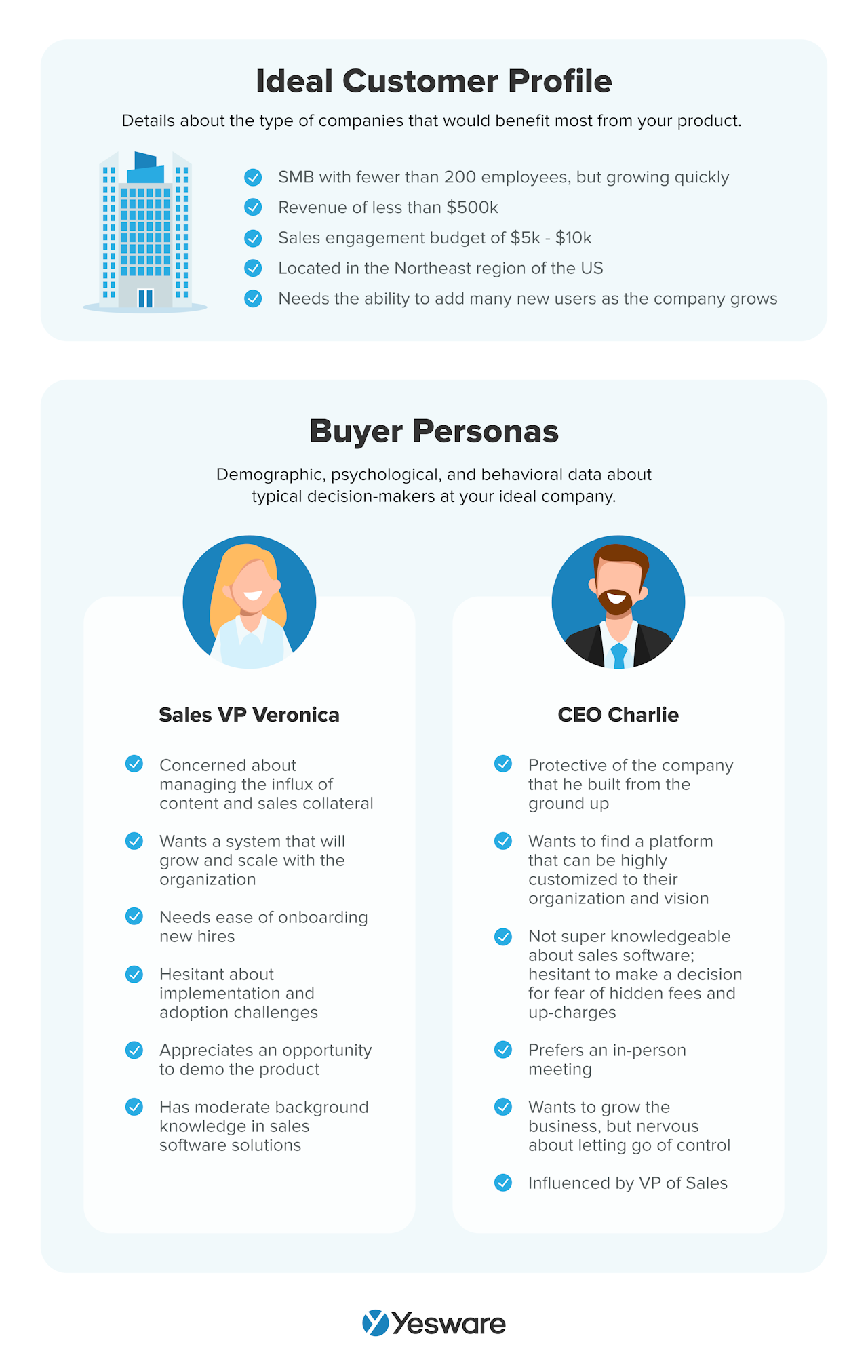 Remember to also ask open-ended questions as much as possible, as they usually generate deeper insights from leads than straightforward, closed-ended ones.
Remember to also ask open-ended questions as much as possible, as they usually generate deeper insights from leads than straightforward, closed-ended ones.
And once you ask the question, sit back and listen — the most successful sales reps talk less in sales conversations than their prospect counterparts.
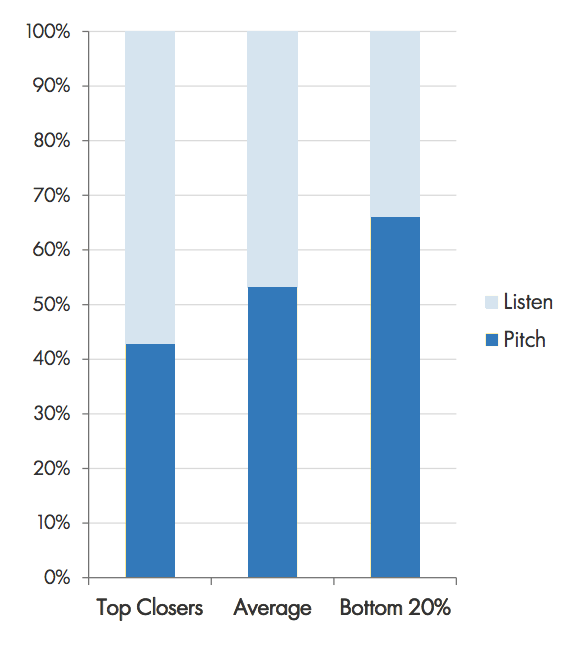
Leads are generally qualified on three levels:
- Organization-level qualification: Make sure that firmographic details from the prospect’s organization match those from the ICP. Research details like company size, location, revenue, etc., to get a baseline understanding of how well-matched the prospect may be.
- Opportunity-level qualification: When you qualify by opportunity (not to be confused with the “sales opportunity” outlined in this article), you’re identifying the likelihood, in reality, that this particular prospect could benefit from your solution. Smart sales reps know not to waste time on poor-fit opportunities.
- Stakeholder-level qualification: Sales reps should also take the time to qualify whether the prospect is a stakeholder and/or a decision-maker in the buying process. If the prospect doesn’t have the authority to make purchases, it’s worth trying to connect with someone else at the organization who does.
2. Nurture Your Leads
Lead nurturing is the process of keeping leads engaged throughout the sales process with targeted, valuable content and communication.
Sales leads come in all shapes, sizes, and levels of readiness. For those who aren’t ready to buy right away, sales teams can design specific lead-nurturing sales collateral to support them throughout the process and keep their brand top of mind.
Research shows that at least 50% of leads are definitely not ready to buy when they officially enter the sales funnel, so lead nurturing is becoming an increasingly crucial practice for sales teams. 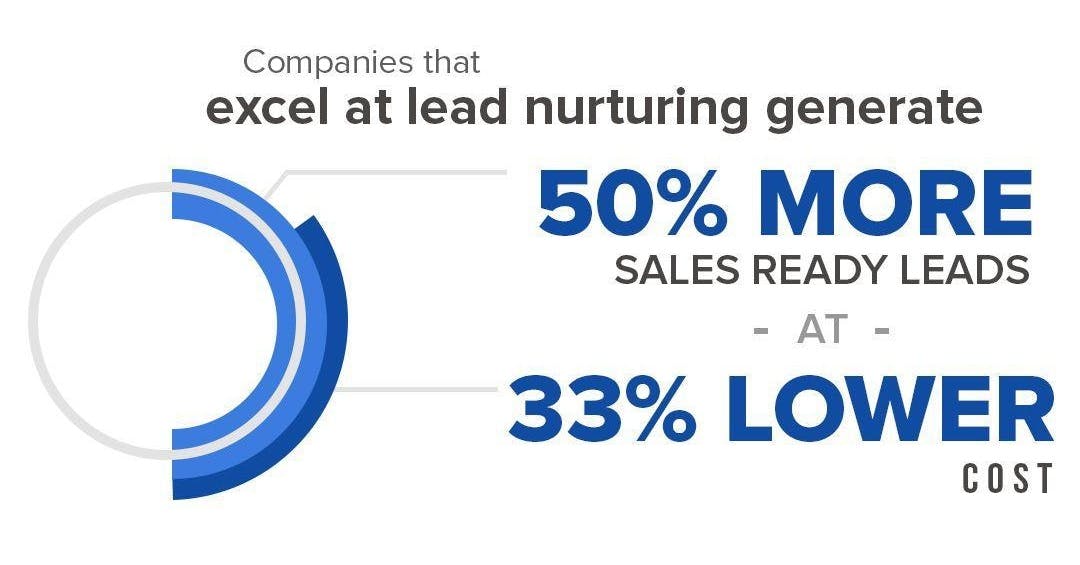
3. Collect Information About Your Leads
The more you can learn about your leads during this stage, the better.
A well-researched lead can quickly become a prospect with a few strategic and well-planned interactions.
4. Help Your Leads
Offer value to your leads whenever you can. Blogs, lead magnets, newsletters, and email sequences can be easy ways to provide relevant, helpful content in a non-pushy way. 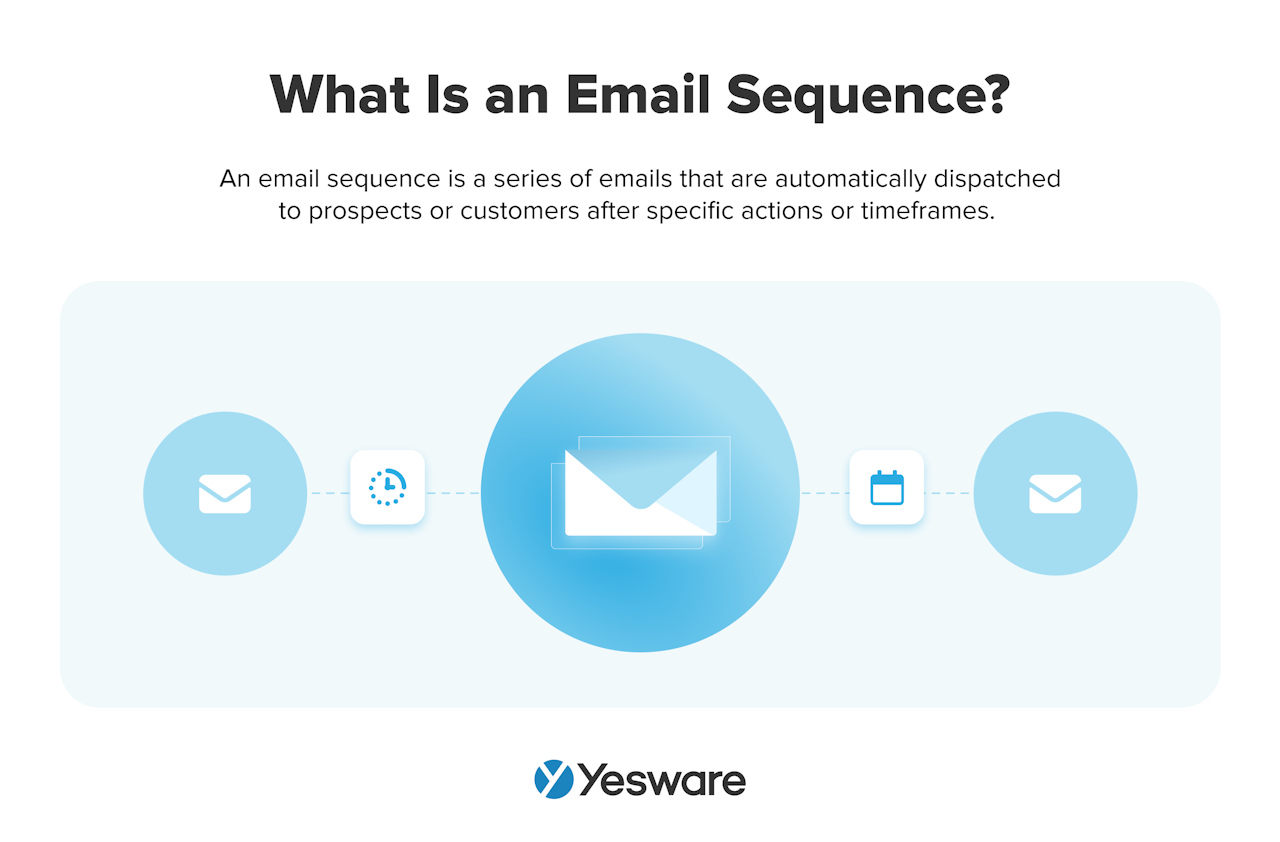 Looking for email templates that engage and add value to your leads and prospects?
Looking for email templates that engage and add value to your leads and prospects?
Grab our free ebook below filled with top-performing email templates.
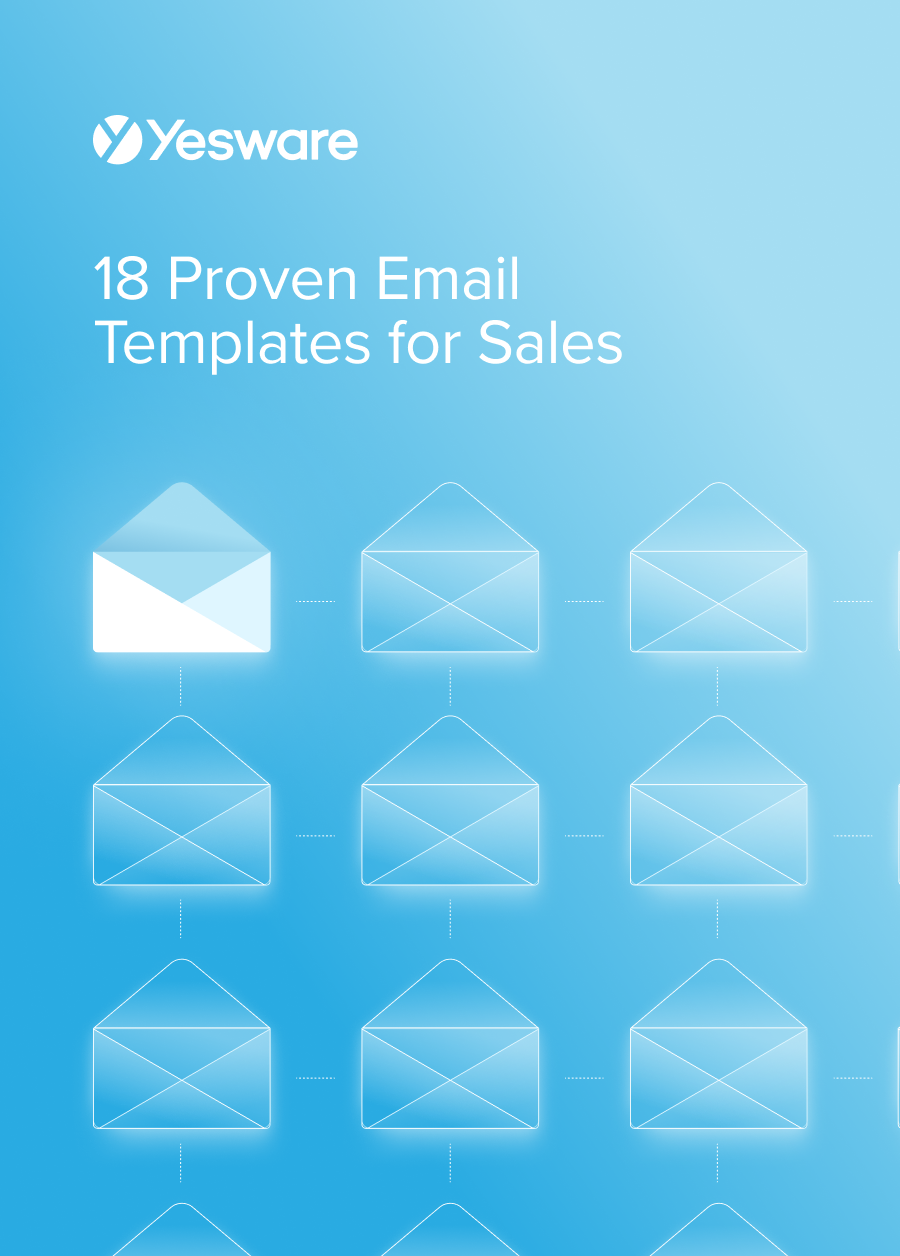 18 Proven Email Templates for SalesWinning email templates for cold outreach, follow-ups, and nurturing relationships – backed by data and real-world examples.
18 Proven Email Templates for SalesWinning email templates for cold outreach, follow-ups, and nurturing relationships – backed by data and real-world examples.
5. Socialize with Your Leads
Social selling is one of the most effective ways to generate leads and turn them into prospects.
Your brand’s social media presence can greatly impact how frequently your leads convert to prospects. 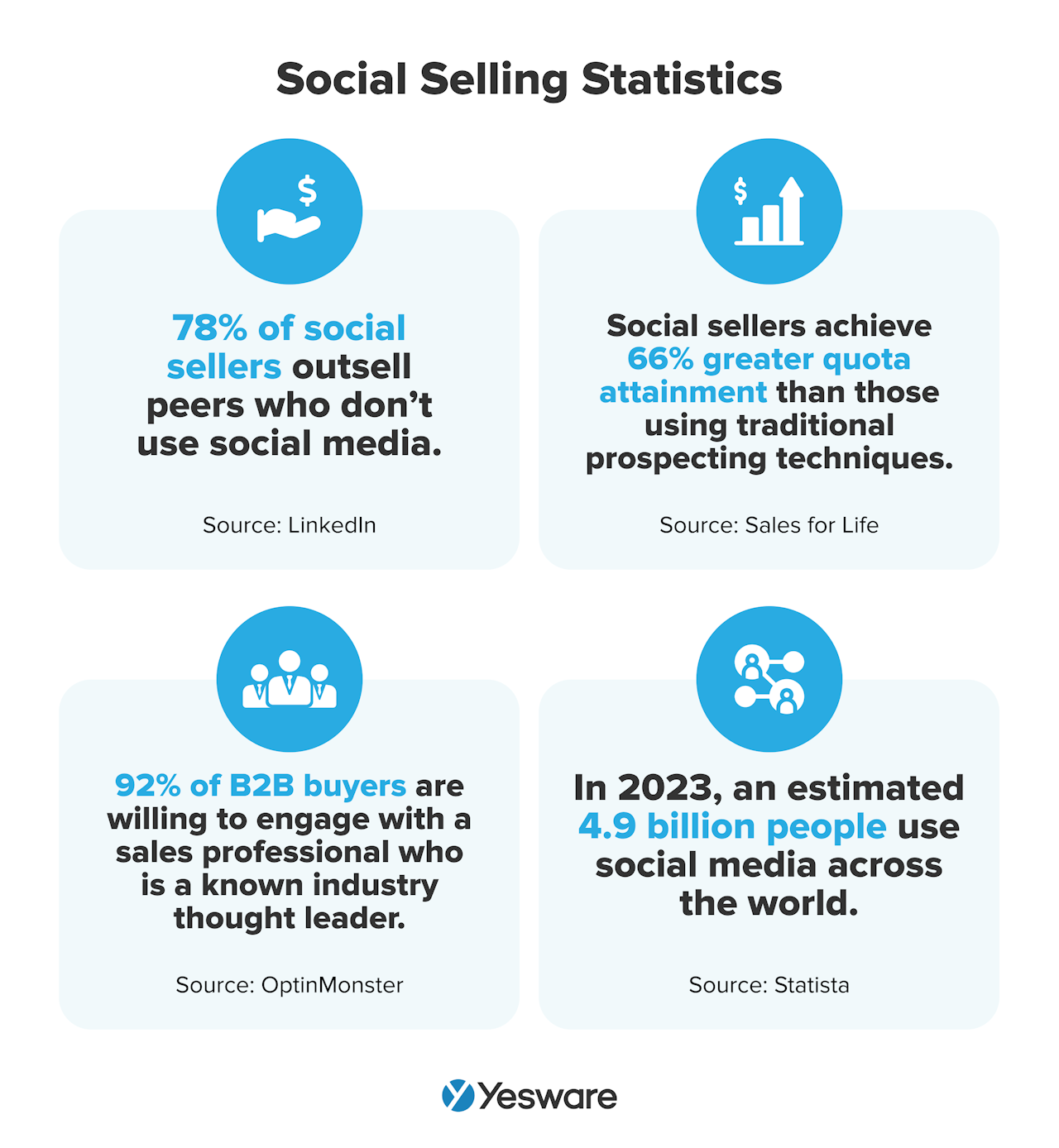 Teams who use their social platforms to their advantage enjoy shorter sales cycles, better sales relationships, and increased engagement and conversion rates.
Teams who use their social platforms to their advantage enjoy shorter sales cycles, better sales relationships, and increased engagement and conversion rates.
How to Turn a Prospect into an Opportunity
Prospects may stay prospects for any length of time, depending on a variety of factors.
Sales reps who want to see conversions and closed deals need to learn how to efficiently transform prospects into sales opportunities.
Here are some of the most effective ways.
1. Get To Know Them
The first step in turning a prospect into an opportunity is to get to know them — really get to know them.
Keep it professional, of course, but now is the time to really dig into the specific wants, needs, pain points, challenges, goals, and more of each unique prospect.
The best way to get them talking is by asking open-ended questions rather than closed-ended. 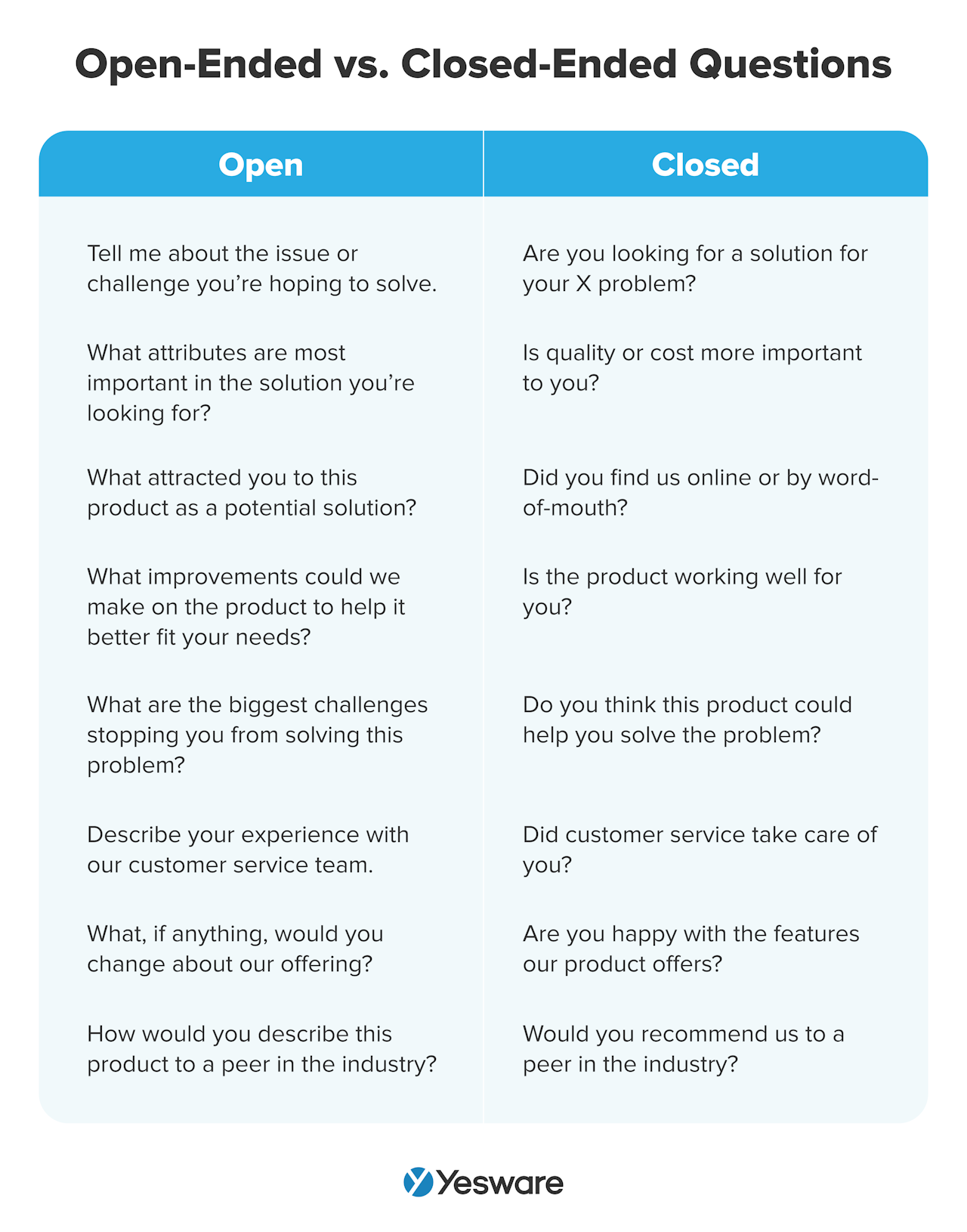 The more you understand about what makes them tick as buyers, the better you can tailor the second half of the sales funnel directly to their needs.
The more you understand about what makes them tick as buyers, the better you can tailor the second half of the sales funnel directly to their needs.
2. Keep Nurturing
Nurturing is just as important during the transition from prospect to opportunity as it is from lead to prospect.
The key during this phase of nurturing is to develop a deeper relationship through your content and interactions.
High-value content like webinars, whitepapers, case studies, video tutorials, and live or virtual events can be lucrative offers for prospects who may be ready to transition to a more serious level of interest.
3. Be Patient
While it’s true that sales opportunities represent buyers who are more ready to buy than those in any other stage, it’s also important that sales reps keep in mind that even the most eager buyers shouldn’t be pushed or forced into a contract.
Remember that the sales process should always be buyer-led, no matter what stage of the funnel you’re working or how enthusiastic the buyer seems.
Sales technology like Yesware can help sales reps design automated, personalized outreach campaigns that keep sales reps seamlessly and productively in touch with buyers until they’re ready for the next level of interaction.
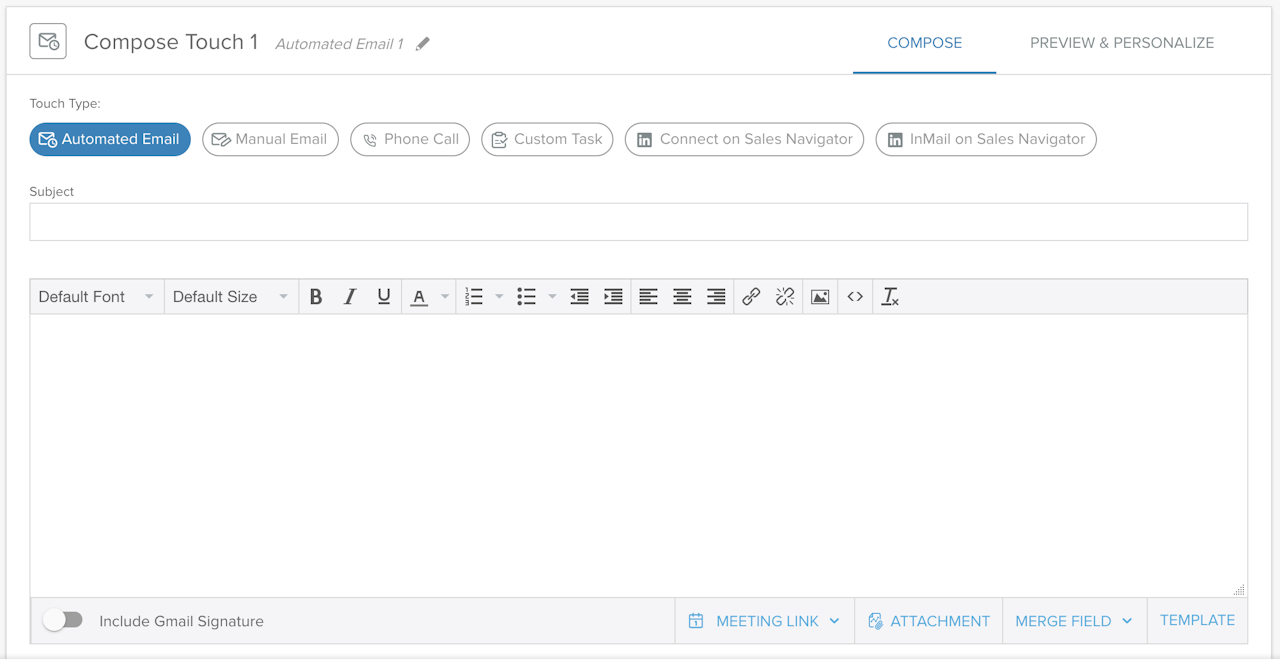
With most sales requiring an average of 8 touch points before closing, sales teams that learn to leverage technology and automation can easily juggle all of the many moving pieces of deals in different stages — and even stay one step ahead.
Sign up for Yesware for free today.
Why It All Matters
The differences between lead vs. prospect vs. opportunity might seem trivial, but they actually have big implications for the sales process; a sales team’s ability to understand these nuances could potentially dictate everything from internal organization to revenue stream and forecasting. 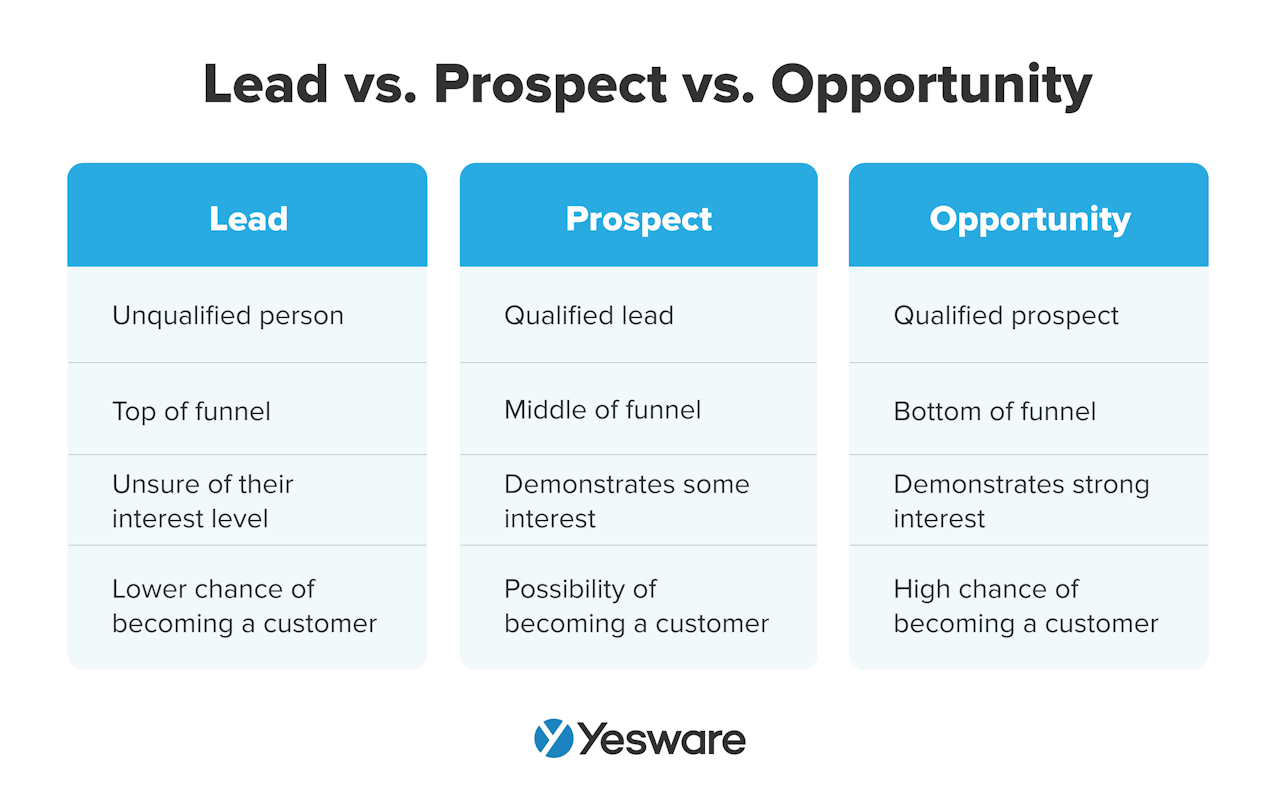 Each of the three terms represents a distinct, separate stage of the sales funnel. Defining the terms appropriately — and enforcing the same among your entire team — helps everyone stay on the same page and keeps the pipeline organized.
Each of the three terms represents a distinct, separate stage of the sales funnel. Defining the terms appropriately — and enforcing the same among your entire team — helps everyone stay on the same page and keeps the pipeline organized.
Keeping these groups separately defined is not just important internally; it also matters for the buyers themselves.
Leads and prospects and opportunities all need different approaches, resources, and levels of prioritization. Sales reps need to be able to clearly recognize the stage that each buyer is in, so they can strategize, prioritize, and nurture accordingly.
Effective definition of these three groups also helps sales forecasting, as it helps invested parties more clearly visualize how close each “opportunity” really is to becoming a sale.
Does your team know the similarities and differences of lead vs. prospect vs. opportunity? What did you do — or what will you do this year — to get everyone on the same page?
Get sales tips and strategies delivered straight to your inbox.
Yesware will help you generate more sales right from your inbox. Try our Outlook add-on or Gmail Chrome extension for free, forever!
Related Articles
Casey O'Connor
Casey O'Connor
Jenny Keohane
Sales, deal management, and communication tips for your inbox
